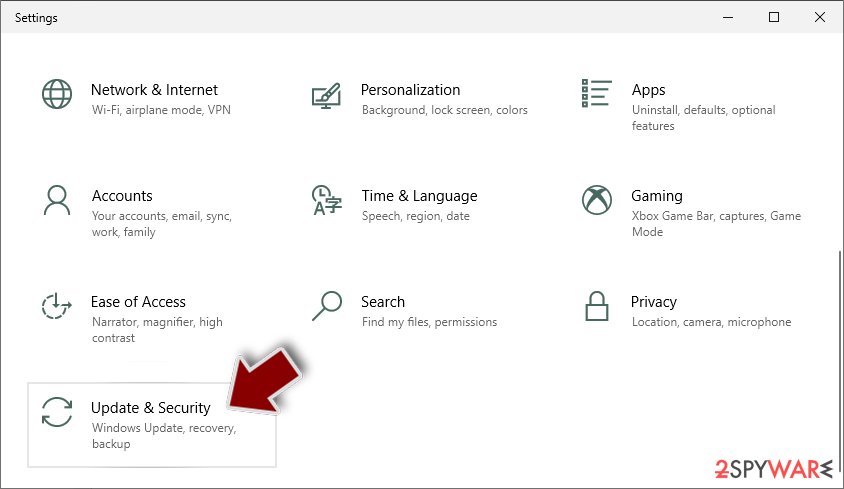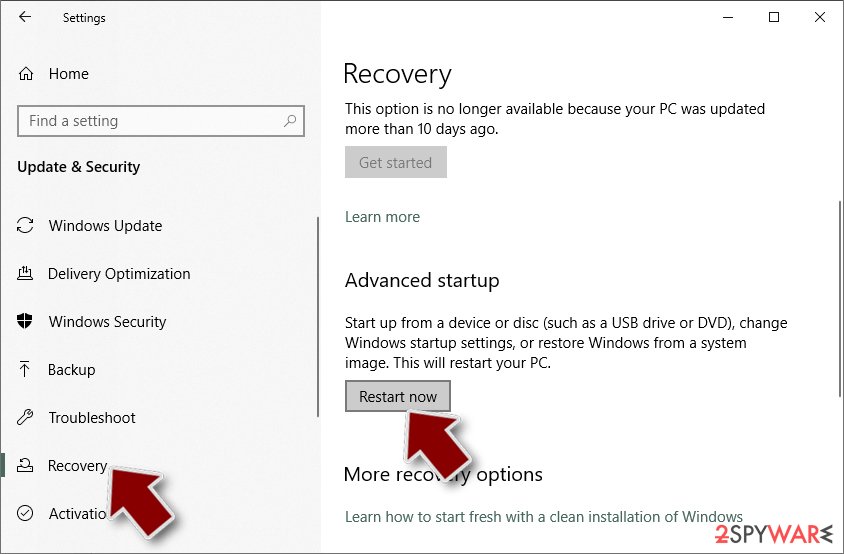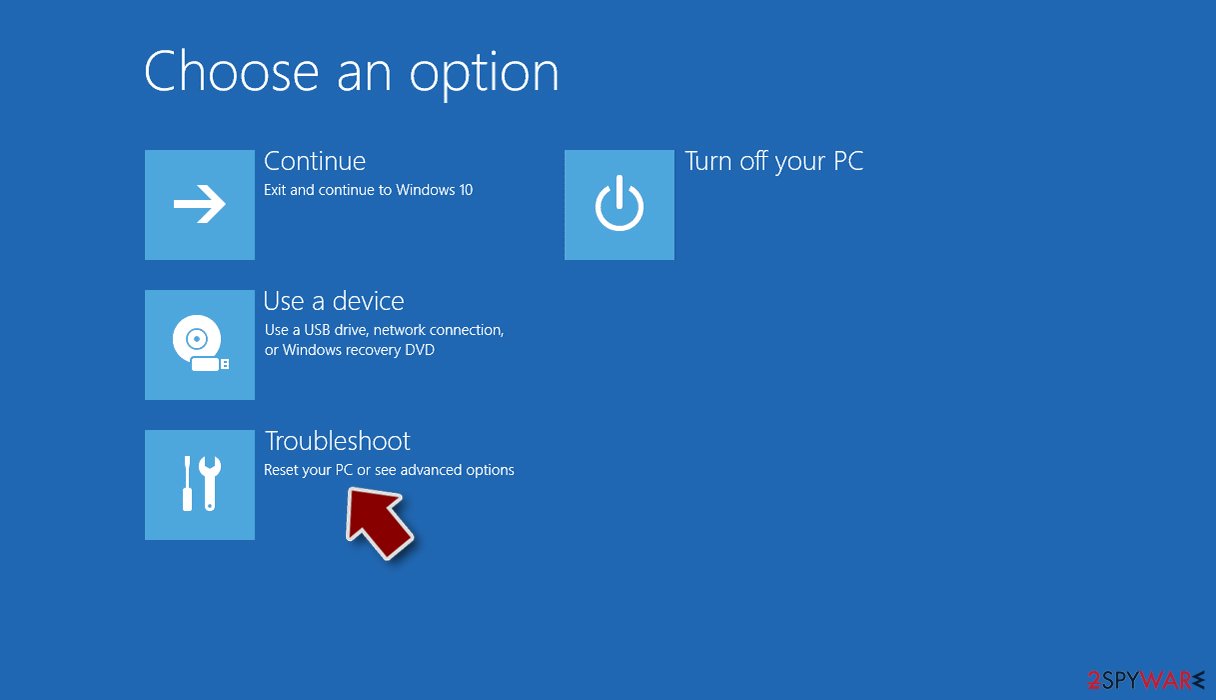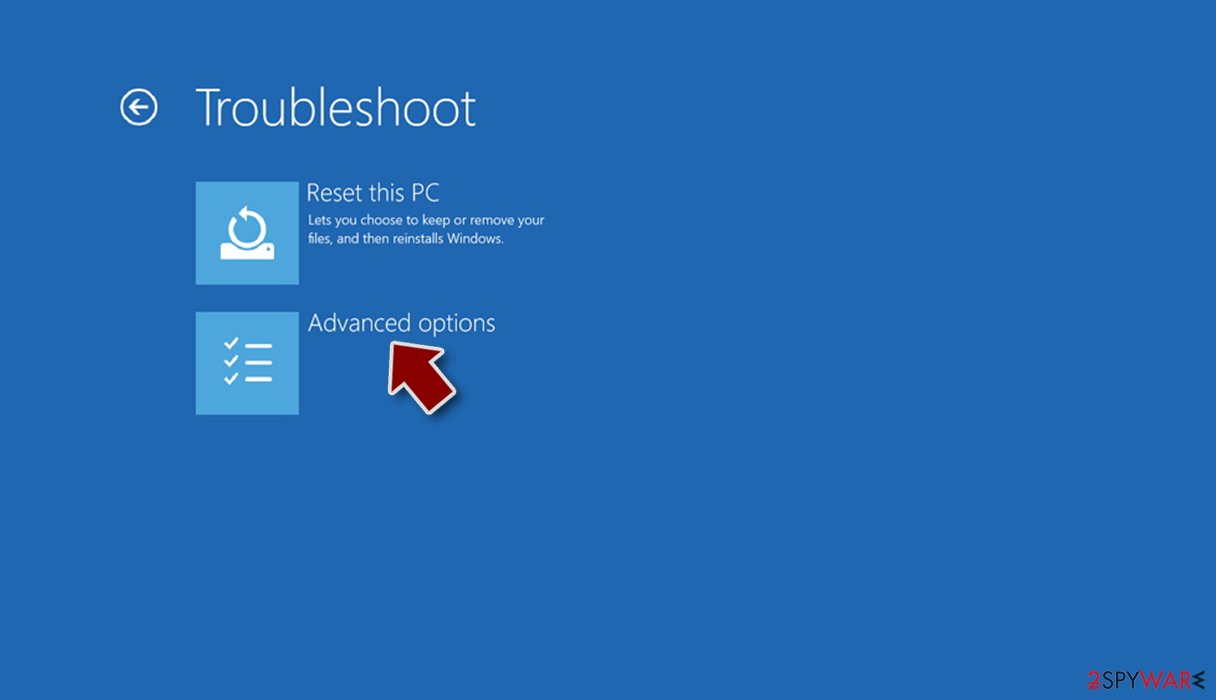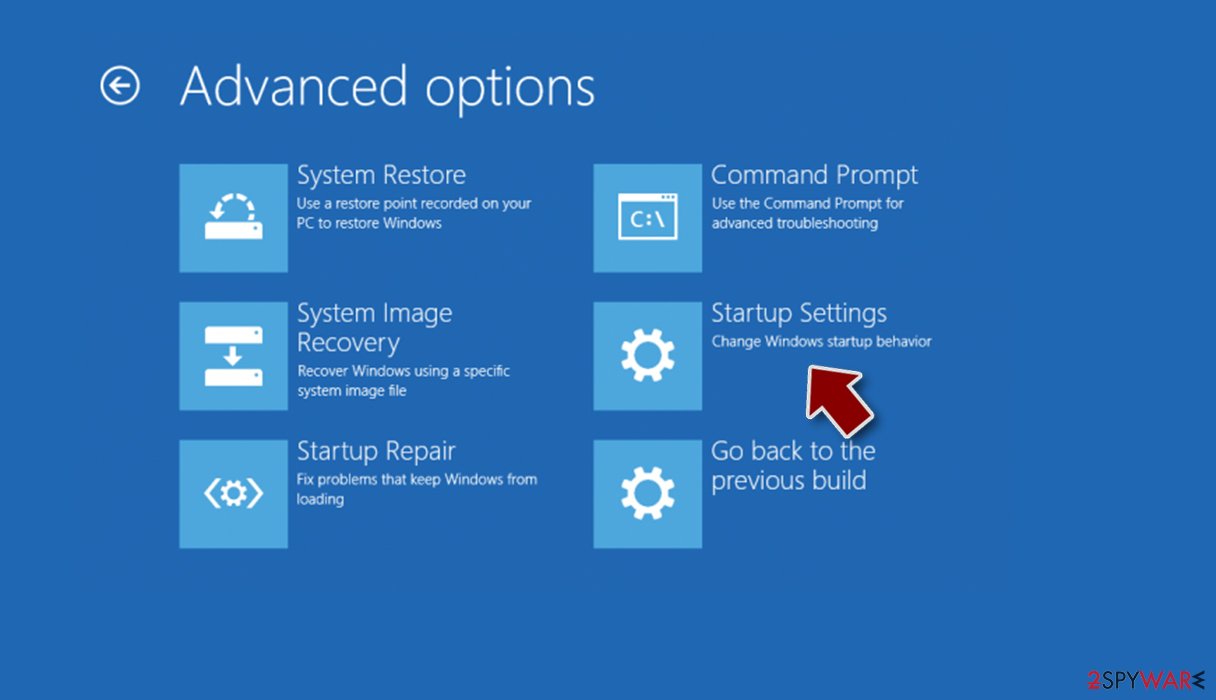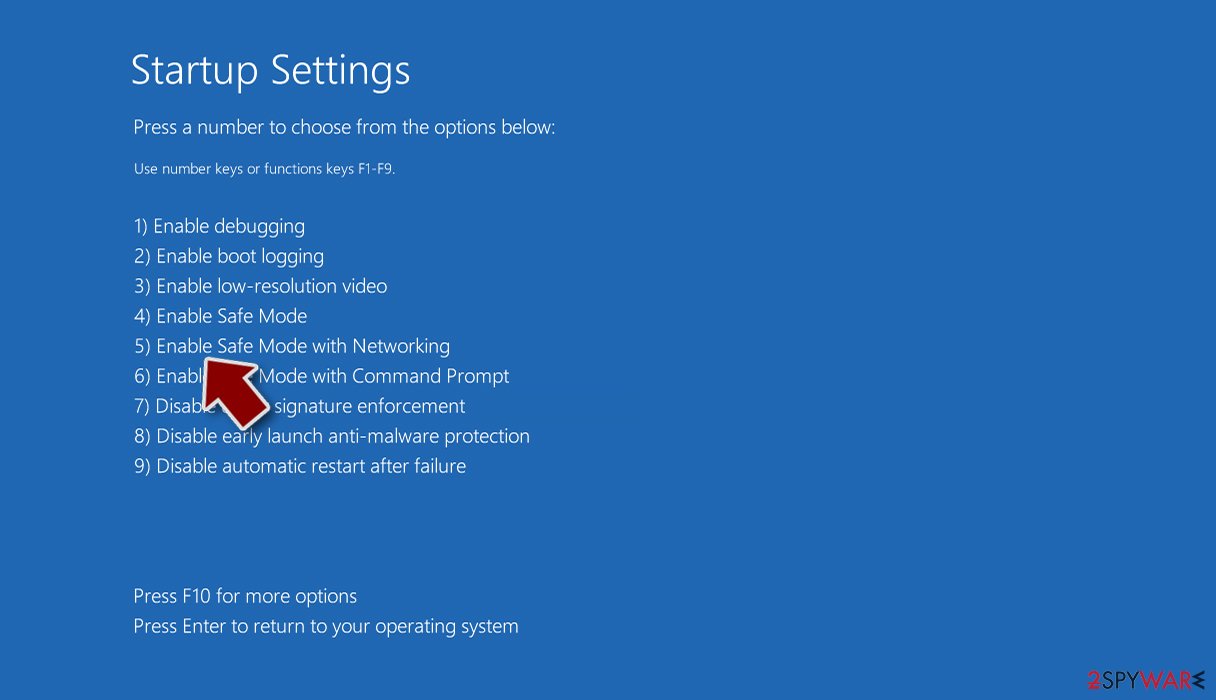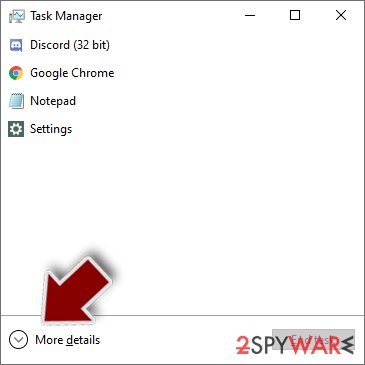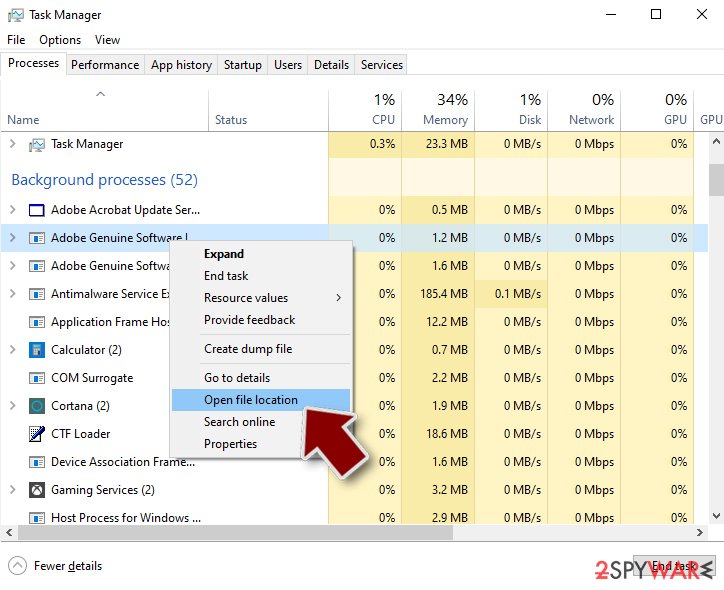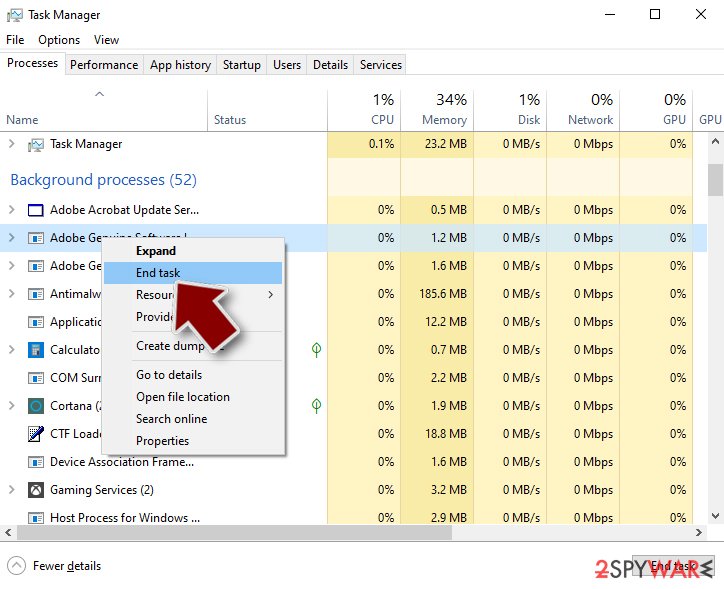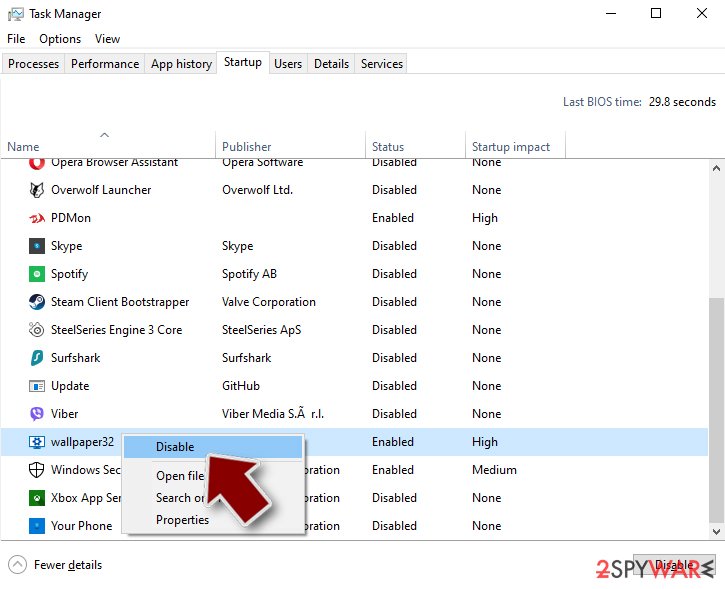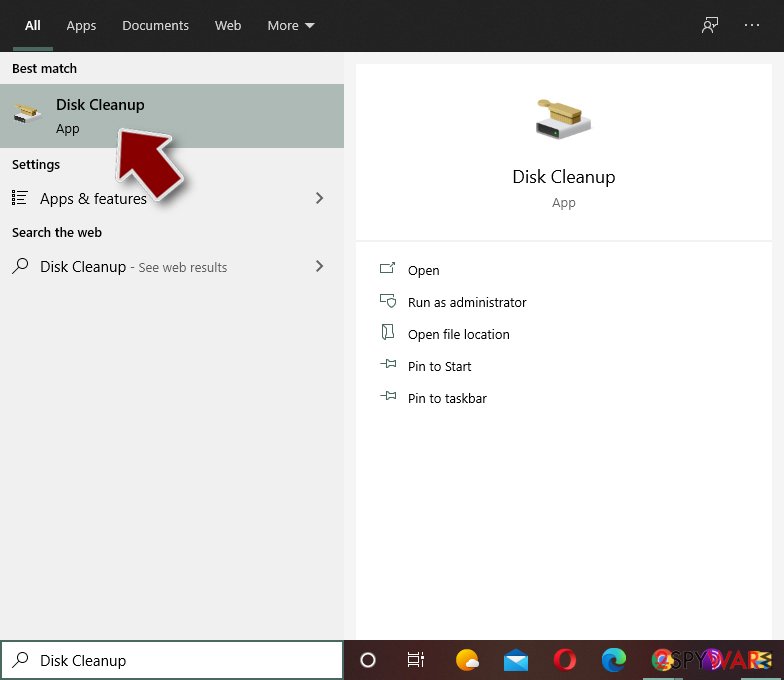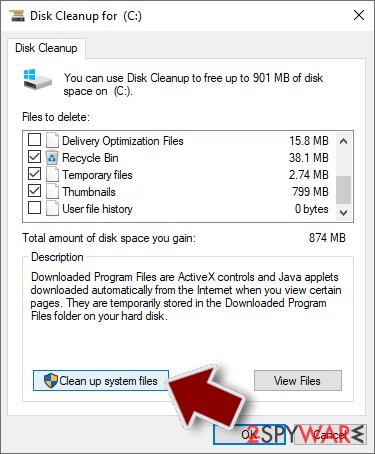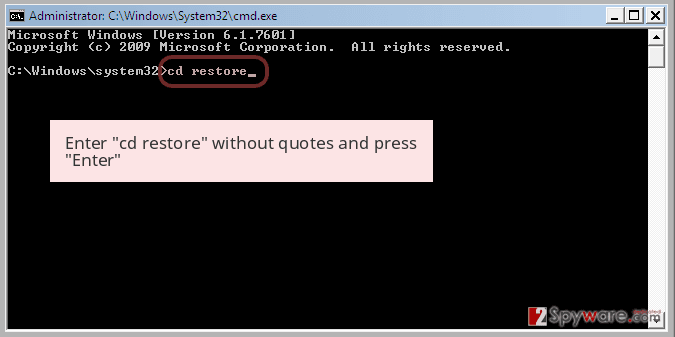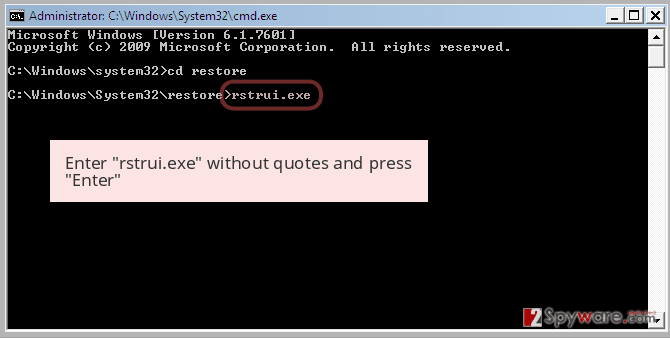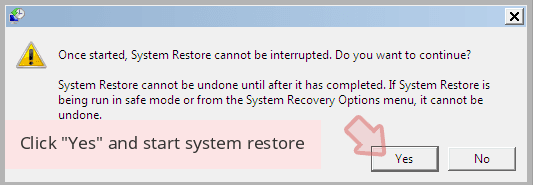RedAnts ransomware / virus (Quick Decryption Solution) - Easy Removal Guide
RedAnts virus Removal Guide
What is RedAnts ransomware virus?
What damage might cause RedAnts ransomware virus?
RedAnts ransomware aims at the most popular and often used file types and encrypts them using AES encryption algorithm[1]. This strong cipher allows distorting data and making it useless. The virus targets Microsoft Office and Adobe files, various types of images, audio and video files, databases, and other files stored in %Desktop%, %Downloads%, %Pictures% and%Documents% directories. All data affected by RedAnts virus have .Horas-Bah file extension which prevents users from opening and using them. In order to decrypt files, victims need to have a specific key. However, developers of the ransomware keep it in secret and do not reveal unless victims decide to pay the ransom. As soon as data encryption is over, the virus drops a ransom note called READ_ME.txt where hackers demand 0.5 Bitcoin. If you do not have data backups, it might seem like the only possibility to get back access to your files. The RedAnts malware might be capable of decrypting Shadow Volume Copies[2] that are crucial for the data recovery using other tools. However, we do not recommend giving up. There are more important things to do after ransomware attack.[3]
File-encrypting viruses are pure blackmailing tools. Crooks are only interested in generating illegal incomes and data decryptions is just the matter of their conscience. No one can assure you that developers of the RedAnts ransomware virus are capable of decrypting your files and are willing to do it. In some cases, authors of the file-encrypting viruses do not have the power to repair the damage. However, they do not bother to give false promises and take the money. Thus, we highly suggest RedAnts removal as soon as it starts blackmailing you. Elimination of the virus does not help to recover your files; however, it is necessary to protect your computer and privacy from other possible threats. For the removal, you will need additional software. In our opinion, the best tool to remove RedAnts entirely is FortectIntego. Of course, you can choose any other antivirus or malware removal program.
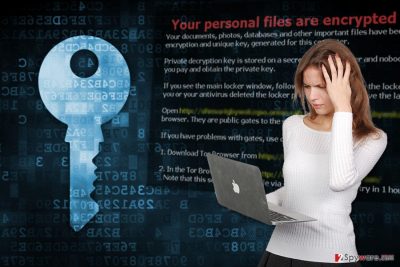
How can I get infected with ransomware?
Developers of the RedAnts virus use various distribution and infiltration methods that help to infect computers effectively. The virus might use exploit kits or drive-by downloads, send malicious and obfuscated JavaScript via emails or launch Dll file attacks[4]. Thus, you can get infected with the ransomware after opening a suspicious email attachment. Unfortunately, no matter how much cybersecurity specialists talk about it, people are still opening suspicious email attachments that eventually surprise them with malware attach. Please, be careful with received emails[5] that urge to open attached Word or PDF document; it might be infected. Also, be aware that torrents and file sharing websites are potentially dangerous places to install programs or illegal files. Developers of the malware often include malicious components into these downloads. Thus, always chose safe and reliable sources for downloads and updates.
How can I remove RedAnts from the computer?
Some cyber infections can be deleted from the system manually; however, not this one. For RedAnts removal, you have to employ professional malware removal tools and run a system scan. Programs, such as FortectIntego or SpyHunter 5Combo Cleaner, can locate and delete all ransomware-related files and apps. To do it manually is nearly impossible because file-encrypting viruses might be hiding in the system in every shade and form, and look like legitimate system files. However, you should now that remove RedAnts might not easy even with security tools. The virus might prevent from installing it or block access to them. In this case, you need to reboot the computer to the Safe Mode and try again.
Getting rid of RedAnts virus. Follow these steps
Manual removal using Safe Mode
RedAnts ransomware virus might prevent from installing antivirus program and perform automatic virus removal. Follow these steps below to access security tools:
Important! →
Manual removal guide might be too complicated for regular computer users. It requires advanced IT knowledge to be performed correctly (if vital system files are removed or damaged, it might result in full Windows compromise), and it also might take hours to complete. Therefore, we highly advise using the automatic method provided above instead.
Step 1. Access Safe Mode with Networking
Manual malware removal should be best performed in the Safe Mode environment.
Windows 7 / Vista / XP
- Click Start > Shutdown > Restart > OK.
- When your computer becomes active, start pressing F8 button (if that does not work, try F2, F12, Del, etc. – it all depends on your motherboard model) multiple times until you see the Advanced Boot Options window.
- Select Safe Mode with Networking from the list.

Windows 10 / Windows 8
- Right-click on Start button and select Settings.

- Scroll down to pick Update & Security.

- On the left side of the window, pick Recovery.
- Now scroll down to find Advanced Startup section.
- Click Restart now.

- Select Troubleshoot.

- Go to Advanced options.

- Select Startup Settings.

- Press Restart.
- Now press 5 or click 5) Enable Safe Mode with Networking.

Step 2. Shut down suspicious processes
Windows Task Manager is a useful tool that shows all the processes running in the background. If malware is running a process, you need to shut it down:
- Press Ctrl + Shift + Esc on your keyboard to open Windows Task Manager.
- Click on More details.

- Scroll down to Background processes section, and look for anything suspicious.
- Right-click and select Open file location.

- Go back to the process, right-click and pick End Task.

- Delete the contents of the malicious folder.
Step 3. Check program Startup
- Press Ctrl + Shift + Esc on your keyboard to open Windows Task Manager.
- Go to Startup tab.
- Right-click on the suspicious program and pick Disable.

Step 4. Delete virus files
Malware-related files can be found in various places within your computer. Here are instructions that could help you find them:
- Type in Disk Cleanup in Windows search and press Enter.

- Select the drive you want to clean (C: is your main drive by default and is likely to be the one that has malicious files in).
- Scroll through the Files to delete list and select the following:
Temporary Internet Files
Downloads
Recycle Bin
Temporary files - Pick Clean up system files.

- You can also look for other malicious files hidden in the following folders (type these entries in Windows Search and press Enter):
%AppData%
%LocalAppData%
%ProgramData%
%WinDir%
After you are finished, reboot the PC in normal mode.
Remove RedAnts using System Restore
If the previous method did not help and you still cannot run automatic RedAnts removal, please follow these steps and try again:
-
Step 1: Reboot your computer to Safe Mode with Command Prompt
Windows 7 / Vista / XP- Click Start → Shutdown → Restart → OK.
- When your computer becomes active, start pressing F8 multiple times until you see the Advanced Boot Options window.
-
Select Command Prompt from the list

Windows 10 / Windows 8- Press the Power button at the Windows login screen. Now press and hold Shift, which is on your keyboard, and click Restart..
- Now select Troubleshoot → Advanced options → Startup Settings and finally press Restart.
-
Once your computer becomes active, select Enable Safe Mode with Command Prompt in Startup Settings window.

-
Step 2: Restore your system files and settings
-
Once the Command Prompt window shows up, enter cd restore and click Enter.

-
Now type rstrui.exe and press Enter again..

-
When a new window shows up, click Next and select your restore point that is prior the infiltration of RedAnts. After doing that, click Next.


-
Now click Yes to start system restore.

-
Once the Command Prompt window shows up, enter cd restore and click Enter.
Bonus: Recover your data
Guide which is presented above is supposed to help you remove RedAnts from your computer. To recover your encrypted files, we recommend using a detailed guide prepared by 2-spyware.com security experts.If your files are encrypted by RedAnts, you can use several methods to restore them:
Data Recovery Pro might help to restore files encrypted by RedAnts ransomware
Data Recovery Pro is a professional tool that is capable of restoring damaged, deleted or encrypted files. Follow these steps to use it:
- Download Data Recovery Pro;
- Follow the steps of Data Recovery Setup and install the program on your computer;
- Launch it and scan your computer for files encrypted by RedAnts ransomware;
- Restore them.
Windows Previous Versions feature might let to recover some of the files encrypted by RedAnts ransomware virus
System Restore functions allows accessing previously saved versions of the particular files. Thus, if this version was enabled on your PC before ransomware attack, please follow these steps:
- Find an encrypted file you need to restore and right-click on it;
- Select “Properties” and go to “Previous versions” tab;
- Here, check each of available copies of the file in “Folder versions”. You should select the version you want to recover and click “Restore”.
RedAnts decrypter
We are sorry, but RedAnts decrypter is not available yet.
Finally, you should always think about the protection of crypto-ransomwares. In order to protect your computer from RedAnts and other ransomwares, use a reputable anti-spyware, such as FortectIntego, SpyHunter 5Combo Cleaner or Malwarebytes
How to prevent from getting ransomware
Do not let government spy on you
The government has many issues in regards to tracking users' data and spying on citizens, so you should take this into consideration and learn more about shady information gathering practices. Avoid any unwanted government tracking or spying by going totally anonymous on the internet.
You can choose a different location when you go online and access any material you want without particular content restrictions. You can easily enjoy internet connection without any risks of being hacked by using Private Internet Access VPN.
Control the information that can be accessed by government any other unwanted party and surf online without being spied on. Even if you are not involved in illegal activities or trust your selection of services, platforms, be suspicious for your own security and take precautionary measures by using the VPN service.
Backup files for the later use, in case of the malware attack
Computer users can suffer from data losses due to cyber infections or their own faulty doings. Ransomware can encrypt and hold files hostage, while unforeseen power cuts might cause a loss of important documents. If you have proper up-to-date backups, you can easily recover after such an incident and get back to work. It is also equally important to update backups on a regular basis so that the newest information remains intact – you can set this process to be performed automatically.
When you have the previous version of every important document or project you can avoid frustration and breakdowns. It comes in handy when malware strikes out of nowhere. Use Data Recovery Pro for the data restoration process.
- ^ Cassius Puodzius. How encryption molded crypto-ransomware. WeLiveSecurity. News, views, and insight from the ESET security community.
- ^ What Are “Shadow Copies”, and How Can I Use Them to Copy Locked Files?. How-To Geek. Includes help, tutorials, tips and how-to guides for Windows and Linux.
- ^ Ryan Harnedy. How to Recover from Ransomware: The First 5 Things You Should Do. Barkly Blog. The latest endpoint security news, tips, and actionable insights.
- ^ DLL Hijacking Vulnerability Attacks, Prevention & Detection. The Windows Club. The website discusses & offers Windows 10/8/7 Tips, Tricks, Help, Support, Tutorials, News, Freeware Downloads, Features & more.
- ^ Detecting and Combating Malicious Email. SearchSecurity. Security information, news and tips.


